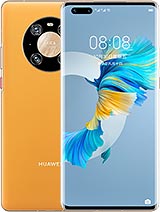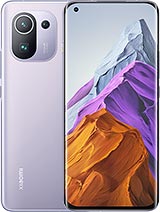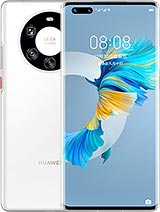Xiaomi Mi 11 vs Mate 40 Pro / iPhone 12 Pro Max / Note 20 Ultra / Mi 10 Ultra AnTuTu Benchmark Test By TechNick
Qualcomm's very first five nanometer processed node technology driven chipsets, the snapdragon 888 is finally here and the Xiaomi mi 11 is the first device to debut it. The Xiaomi is all the way on the left and its older brother. The mi10 ultra is the way on the right hand, side between those two. We have two more five nanometer chips on the Huawei and iPhone, and a seven nanometer plus chipped Samsung Galaxy note 20 ultra. We have updated them all to the latest available software here, android 11 on the Xiaomi android 10 on the rest of the devices and rs14 on the iPhone. The Xiaomi, mi, 11, Huawei and iPhone are all running on five nanometer processor technology, while the Samsung and me 10 ultra, are running on slightly older 700 meter plus tech.
The only phone store stuck at 60 hertz here is the iPhone 12. The mate 40 pro has 90 hertz, which is more than enough. If you ask me any overkill devices here, the other three all kitted with 120 hertz refresh rate panels, the Xiaomi mi 10 ultra- is the only device here that has a native full HD plus panel at 1080p. Nothing needs to be changed over there. The iPhone 12 Pro max cannot be changed, and it's somewhere between full HD and HD.
The Samsung cannot run HD and 120 hertz at the same time, so we've dropped it down to full HD so that it can rock 120 hertz matching that is the mi 11 and mate 40 pro bringing them both down to match the rest of the devices here at full. HD plus, you have game turbo on the Xiaomi devices, performance mode and game space on the Huawei, no performance options on the iPhone and the Samsung has high performance mode and focus on performance. When gaming, all the android phones are updated to the latest version of an tutu version 8.5.2, while the iPhone is still rocking. Eight point three point: seven, I'm really excited to see how these brand spanking new five nanometer chips, compare to the older gen, seven nanometers plus this is technique and without further ado, let's go we're going to start out by checking the battery percentage at the start of the test. We will go ahead and compare this once we've reached the end of the test, and I'll test out the milliampere permanent readings in relation to how long the test actually takes we're going to be using an emissivity level of 0.5 on my infrared heat gun over here. In order to test that heat dissipation from the start and once again we're going to compare this at the end of the test, so stay tuned for that one to see which one gets hotter, but as of right now, the hottest on the table.
Right now is the 11 and the coolest is the Samsung Galaxy note 20 ultra starting the three five nanometer process: no tech phones on the left hand, side at the same time and the two seven nanometers, no tech phones on the right hand, side. At the same time, we're now in 100 real time I speed up certain parts of the nc2 version 8, so I don't keep you guys here for too long, but right now we're focusing on how smooth it is. The first part of an tutu version 8 is not that demanding when it comes to CPU and GPU performance, all of them look absolutely fantastic. You must bear in mind that the snapdragon 865 and 865, plus on the Samsung and the mi 10 ultra respectively, are still very, very good chipsets and, from my understanding and my testing, the ones on the left hand, side aren't actually that much better though they are better. The second part of an tutu that we're in right now can't really notice much of a difference between all of them once more, because this is a pretty easy part of the benchmark.
The most graphic it hits part of this benchmark is, of course, this terracotta soldier part, which is the third part of n22 version 8. Now you can notice a little more of a difference. The snapdragon 888 all the way. On the left hand, side is just so silky smooth. It is ridiculous.
The mate 40 pro is pretty much just as smooth as well as the iPhone, but you can definitely now see or notice that the snapdragon, 865 and 865 plus note 20 ultra and me.10 ultra are suffering a tad over here. There is a tiny little of bagginess when it comes to this part of an tutu, and it was sitting at around 15 frames per second, when I did my fps counter check on this part of an tutu the start of last year. I'll have to do that again this year, so stay tuned for that one, but I'm pretty sure that the three phones on the left-hand side are sitting closer to 30 fps, as opposed to the two on the right which were somewhere between 15 and 20. , nice and smooth for all devices. Here we're moving on to the scrolling effects of all phones and, of course the iPhone tends to run through an tutu version, 8 quicker than the rest of them.
So we're going to get to that right now and yes, we're still at 60hz and 2021. You do feel if it's not so much looking at it, but it's more of how it actually feels when you're scrolling around- and you can see here between 120 hertz, all the way around the left and the Huawei with 90 hertz is not too much of a big difference, but let's jump into those battery drain results. Even though the Xiaomi mi 11 has the biggest 4 600 William hour battery out of the lot over. Here, it drained the most, it dropped by seven percent, and it was draining by a rate of 26.8 William hours per minute. The iPhone 12 Pro max drained by only five percent, with a significantly smaller battery, literally a thousand Williams smaller, and it had a rate of discharge of 15.4 William hours per minute when it comes to device temperature. The Xiaomi mi 11 once again, is the worst over.
Here it reached a peak of 54 degrees in Celsius at the end of the test compared to the next hottest, which is the mi 10 ultra with 49.2. The coolest was the iPhone 12 Pro max with 42.4 the Xiaomi mi 11 added 15.5 degrees Celsius. Of course, we saw it coming the new snapdragon 888 powered Xiaomi mi 11 got crowned first place with 696 011 points, which is great but think about this. For a second third place is the 10 ultra with 668. Now, if you work that out, the difference between them is only a four percent increase toward the mean 11.
, but the good thing in the mini lemon's favor is that it's actually cheaper than the meat 10 ultra. But if all you want is performance, you can pick up much cheaper snapdragon, 865 powered smartphones, but the five nanometer chipset within the mini 11 is supposed to be more efficient in terms of battery efficiency. That didn't really prove to be the case, though I will be doing a battery drain test soon, so stay tuned for that one mate 40 pro was crowned second place, literally a thousand port less than a thousand points behind the 11, the note 20 ultra was dead lost and just in front of that, the iPhone 12 Pro max with the high score I've received for the 12 pro max at 638 000 points, which is still fantastic. The best CPU was allocated to the mi 11 and the worst CPU to the note 20 awful GPU, no 20 ultra once best GPU Xiaomi mi 11 the best memory. This time around.
Surprisingly, they made 40 pro worst memory, no 20 ultra no surprise over there, the worst user experience, though flipped around it's the main 40 pro this time and the best is the 11. I hope that you guys enjoyed watching this video as much as I did. Making if it's up to the channel would be fantastic. This is tech, neck, and I'll, see you in the next one. You.
Source : TechNick









![NOKIA 6 vs Nubia Z11 🚀Speed Test!🚩[4K]](https://img.youtube.com/vi/CBWJnzAgFqM/maxresdefault.jpg )

















